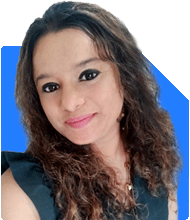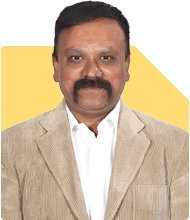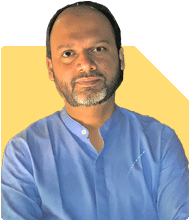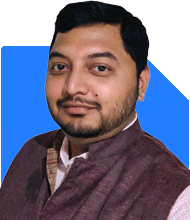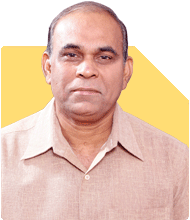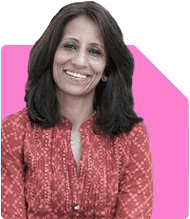Investing Abroad While Planning for India Return - 6,000 Rupee SIPs to 2 Crore Rupees Goal?
Ramalingam Kalirajan |10878 Answers |Ask -Follow
Mutual Funds, Financial Planning Expert - Answered on Nov 28, 2024
He has an MBA in finance from the University of Madras and is a certified financial planner.
He is the director and chief financial planner at Holistic Investment, a Chennai-based firm that offers financial planning and wealth management advice.... more

Hi everyone, I'm Prem, a 21-year-old pursuing higher education abroad, planning to settle in India in 7-8 years. My goal is to beat the inflation & to accumulate at least 2 crore rupees over the next 15 or 20 years through monthly SIPs of 6,000 rupees for the initial 2 years, increasing to 8,000 rupees thereafter. I have a moderate-to-high risk tolerance(60/40 60-safe;40-risky) and am comfortable with market volatility. I'm seeking advice on a diversified investment strategy to achieve my goal, including fund recommendations and tax-efficient approaches. Any specific tips on maximizing returns and minimizing risk would be greatly appreciated.
Set a Strong Foundation
Goal Clarity: Your goal is to accumulate Rs. 2 crore. This is a long-term goal. The timeline allows you to leverage equity's compounding potential.
Investment Tenure: A 15-20 year horizon suits your moderate-to-high risk tolerance. This provides time to recover from market corrections.
Risk Tolerance: A 60/40 risk allocation (safe/risky) is balanced. It provides growth while limiting downside risks.
SIP Strategy
Start Gradually: Begin with Rs. 6,000 monthly for the first two years. Increase to Rs. 8,000 thereafter. Periodic increases (step-up SIPs) every year or two will help.
Allocation Split: Invest 60% in equity funds for growth and 40% in debt funds for stability. This aligns with your risk profile.
Equity Fund Allocation
Large and Mid-Cap Funds: These funds offer a blend of stability and growth. They are suitable for moderate risk-takers.
Flexi-Cap Funds: They provide diversified exposure across market caps, reducing concentration risk.
Small-Cap Funds: Allocate a smaller portion here. Small caps have higher growth potential but also higher volatility.
Debt Fund Allocation
Hybrid Funds: These funds maintain a balance between equity and debt. They are less volatile and provide steady returns.
Short-Duration Funds: Suitable for stable returns in volatile markets. These can be part of your low-risk portfolio.
Tax-Efficient Investments
Equity Funds: Hold for over one year to qualify for long-term capital gains (LTCG) tax benefits. LTCG above Rs. 1.25 lakh annually is taxed at 12.5%.
Debt Funds: Gains are taxed as per your income slab. Holding for over three years qualifies for indexation benefits.
Recommendations for Maximizing Returns
Step-Up SIPs: Increase your SIPs by 10% yearly. This small increment can significantly impact your corpus.
Diversification: Diversify across sectors, fund houses, and geographies. Avoid over-concentration in one segment.
Rebalancing: Review your portfolio every year. Shift funds to maintain the 60/40 equity-to-debt ratio.
Risk Management
Emergency Fund: Maintain six months’ expenses in a liquid fund. This ensures your SIPs continue during emergencies.
Term Insurance: Get a term plan covering 10-15 times your annual expenses. This protects your dependents financially.
Health Insurance: Opt for comprehensive health insurance to avoid draining your investments for medical needs.
The Disadvantage of Index Funds
Index funds often mimic market indices. However, actively managed funds offer better potential returns. Experienced fund managers can identify high-growth opportunities and avoid underperforming stocks.
Benefits of Investing through a Certified Financial Planner
Personalised Advice: Regular plans through a CFP offer tailored strategies. Direct funds lack professional guidance.
Portfolio Monitoring: CFPs monitor performance and suggest timely adjustments. Direct investors may miss this.
Holistic Planning: CFPs integrate your investments with your overall financial goals. This ensures alignment with life stages.
Tips for Achieving Rs. 2 Crore
Stay Invested: Avoid redeeming funds prematurely. Long-term discipline builds wealth.
Avoid Timing the Market: Focus on consistent investments instead of predicting highs and lows.
Leverage Compounding: The earlier you invest, the greater the compounding benefits.
Finally
Achieving Rs. 2 crore in 15-20 years is realistic. Stick to your SIPs, review your plan, and stay disciplined. Your vision, combined with a strategic approach, will help you beat inflation and achieve financial independence.
Best Regards,
K. Ramalingam, MBA, CFP
Chief Financial Planner
www.holisticinvestment.in
https://www.youtube.com/@HolisticInvestment
You may like to see similar questions and answers below
Jinal Mehta | Answer |Ask -Follow
Financial Planner - Answered on Feb 25, 2024
Ramalingam Kalirajan |10878 Answers |Ask -Follow
Mutual Funds, Financial Planning Expert - Answered on May 26, 2024
Ramalingam Kalirajan |10878 Answers |Ask -Follow
Mutual Funds, Financial Planning Expert - Answered on Apr 30, 2024
Ramalingam Kalirajan |10878 Answers |Ask -Follow
Mutual Funds, Financial Planning Expert - Answered on May 10, 2024
Ramalingam Kalirajan |10878 Answers |Ask -Follow
Mutual Funds, Financial Planning Expert - Answered on Aug 05, 2025
Dr Nagarajan J S K |2577 Answers |Ask -Follow
NEET, Medical, Pharmacy Careers - Answered on Dec 10, 2025
Mayank Chandel |2570 Answers |Ask -Follow
IIT-JEE, NEET-UG, SAT, CLAT, CA, CS Exam Expert - Answered on Dec 10, 2025
Samraat Jadhav |2503 Answers |Ask -Follow
Stock Market Expert - Answered on Dec 10, 2025
Radheshyam Zanwar |6741 Answers |Ask -Follow
MHT-CET, IIT-JEE, NEET-UG Expert - Answered on Dec 10, 2025
Ramalingam Kalirajan |10878 Answers |Ask -Follow
Mutual Funds, Financial Planning Expert - Answered on Dec 10, 2025
Ramalingam Kalirajan |10878 Answers |Ask -Follow
Mutual Funds, Financial Planning Expert - Answered on Dec 10, 2025
Samraat Jadhav |2503 Answers |Ask -Follow
Stock Market Expert - Answered on Dec 10, 2025
Samraat Jadhav |2503 Answers |Ask -Follow
Stock Market Expert - Answered on Dec 10, 2025
Samraat Jadhav |2503 Answers |Ask -Follow
Stock Market Expert - Answered on Dec 10, 2025
Shalini Singh |180 Answers |Ask -Follow
Dating Coach - Answered on Dec 10, 2025









